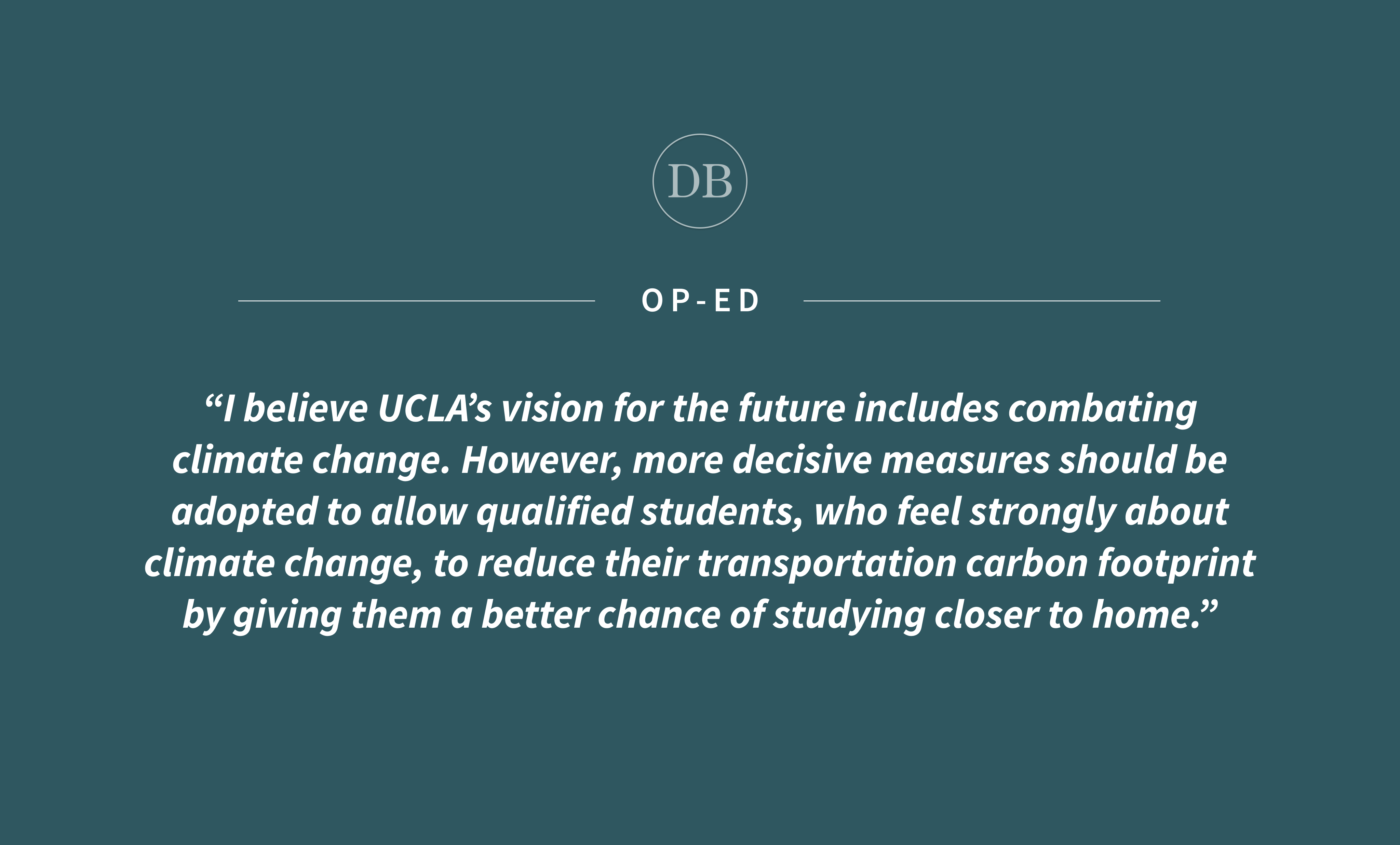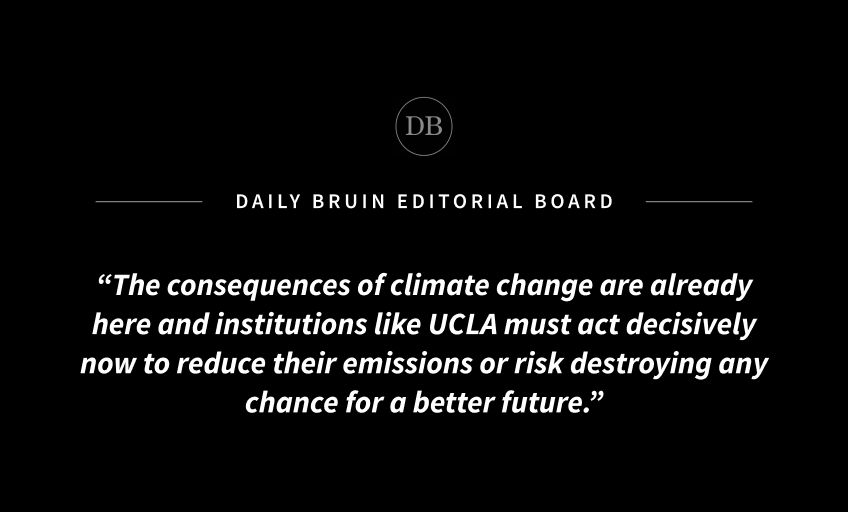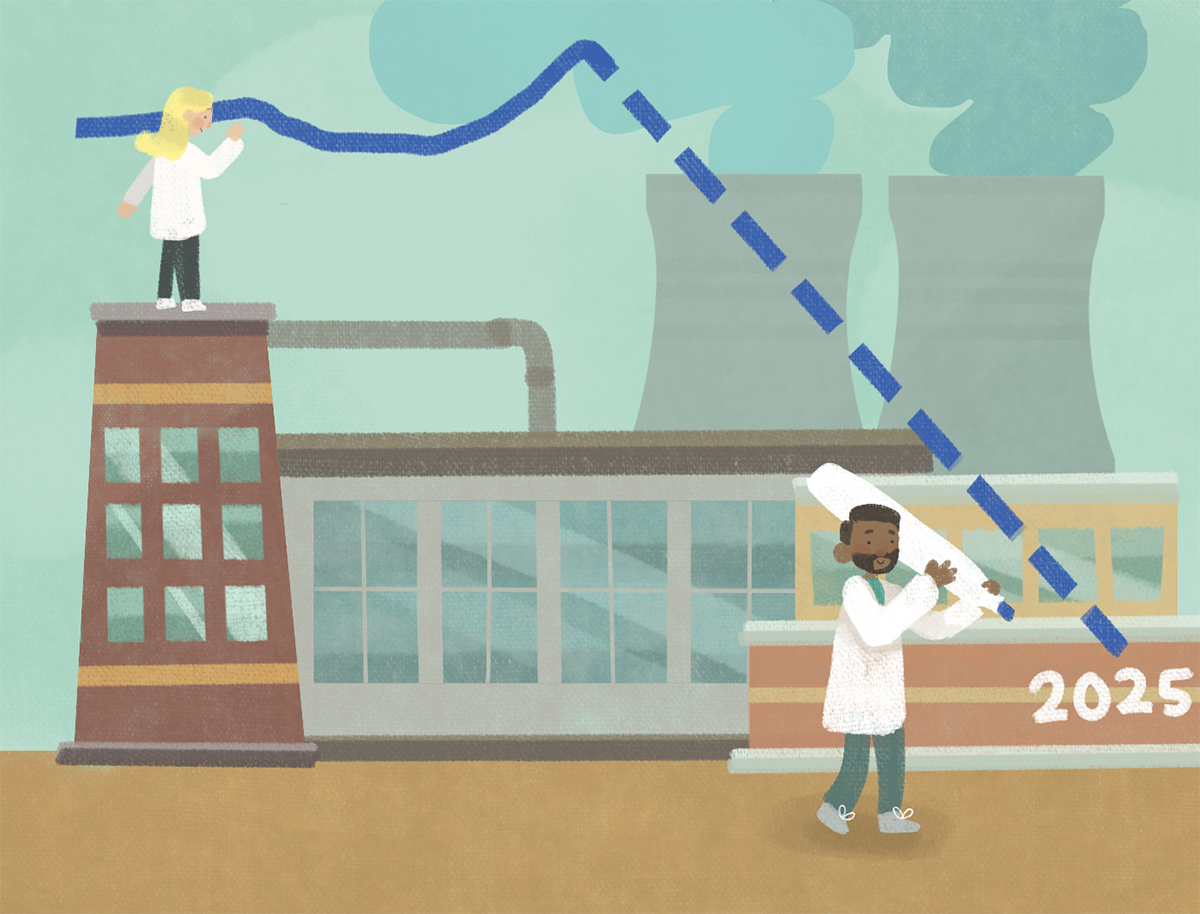Op-ed: Carbon footprint must be considered by UC admissions to combat climate change

By Mohsen Kargahi
April 7, 2024 4:52 p.m.
This post was updated April 7 at 9:11 p.m.
June 2023 was Earth’s hottest June on record, followed by all the remaining months of the year being the hottest months on record. Collectively, 2023 was Earth’s hottest year since global record-keeping began in 1850, according to the National Centers for Environmental Information.
In August of last year, a tropical storm made landfall in Southern California after 80 years, and hurricane winds and flooding caused devastating destruction to homes and other buildings on the East Coast. In Canada last June, fire raged and the smoke affected life on the East Coast – reaching as far as Greenland, Iceland and Norway. Climate change, caused by human activities including burning fossil fuels, demonstrated its catastrophic might at full force.
2023 was also the same year that my daughter applied to universities to attend as a freshman in the fall. Living relatively close to UCLA’s campus, I always thought of UCLA as the most natural and normal choice for my children’s higher education. Their early education started at a UCLA-affiliated preschool. Their primary and secondary education included numerous encounters with UCLA, from field trips and exhibitions to after-school programs and science competitions to performances at Royce Hall.
So, when higher education for my daughter appeared on the horizon, I thought UCLA was the place to go, and her not being admitted to UCLA came as a surprise. Instead, she was put on the UCLA admissions waitlist and remained on that list well into the summer.
In April 2023, we took a road trip to visit all the universities she had been admitted to, to help her choose the school to attend. We started south at UC San Diego, then UC Irvine, then UC Santa Barbara, along with Cal Poly San Luis Obispo and finally visited UC Berkeley. Cal’s historic reputation, scholarly standing and vast academic choices eventually overcame its lack of adequate housing and unsafe neighborhood, leading to its emergence as the winner.
In May, my daughter committed to UC Berkeley, and by mid-July the moving arrangements were also all situated. The plan was that the family would drive her to Berkeley right before her orientation and help her move in. We also had thought of driving to Berkeley again during the Labor Day weekend to visit her and see how she had settled in. Her plans to fly home included visiting for Thanksgiving and Christmas, along with spring and summer break.
All plans changed, however, on July 29 when she received an email informing her that she had been admitted off of UCLA’s waitlist. After several days of excitement, anxiety and stress, she eventually chose UCLA over UC Berkeley, leading to staying in Los Angeles.
How is this relevant to climate change? During our 1040-mile journey in April 2023, we released carbon dioxide into the atmosphere, contributing to climate change and last summer’s unprecedented heat.
While we were traveling in an electric car, most likely CO2 was still released during the production of that electricity. An estimate of CO2 released during the production of electricity in the US is about 0.86 pounds per kilowatt-hour, according to the US Energy Information Administration and other sources. Our car delivered about 3.5 miles per kWH. Thus, we released about 255 pounds of CO2 during our journey.
For cars with Internal Combustion Engines, this is much worse. An average ICE car releases 411 grams, or 0.909 pounds of CO2 per mile, resulting in releasing 945 pounds of CO2 into the atmosphere in a similar trip.
Emissions due to flying are even worse. The average domestic flight emits 0.87 pounds of CO2 per passenger mile. A round-trip flight to Oakland from Los Angeles – totaling nearly 680 miles – would have resulted in releasing 592 pounds of CO2 into the atmosphere per passenger or 2,368 pounds for a family of four.
In addition to the first trip, we were planning to go on two more trips by car to Berkeley – 370 miles away – with 182 pounds of CO2 released per trip. My estimate of CO2 released as a result of her attending Cal in her first year is 2,987 pounds, which includes the first trip. To put that in perspective, per capita transportation emissions in 2022 in the US were 5.13 metric tons or about 11,300 pounds.
Given that about a quarter of the transportation carbon emissions are generated by heavy-duty trucks, per capita annual personal transportation emissions stand at about 8,475 pounds.
By choosing UCLA over UC Berkeley, my daughter reduced her annual transportation emissions by about 2,732 pounds, or a very significant 32%.
My daughter is now settled in a dorm room at UCLA, living a life similar to what she envisioned at Cal. The difference is that she visits home more often, using public transportation with a much smaller carbon footprint.
This brings me to the admissions process. While the university admissions process is believed to not be totally transparent, the UC system, including UCLA, provides the public with some relevant information, data and statistics. The Common Data Set has a section titled “Basis for Selection” that specifies what academic and nonacademic factors are considered in admission decisions along with their relative importance level noted as “Very Important,” “Important,” “Considered” or “Not Considered.”
What is missing in that document, regretfully, is any consideration that can help with combating climate change. One factor in the “Basis for Selection” table is “Geographical residence” with an assigned importance factor of “Considered.” It is defined as “Special consideration in the admission process given to students from a particular region, state, or country of residence.”
It is not clear what regions this special consideration applies to. I speculate that it affects applicants from underprivileged regions of the country and is not about the proximity to the university. I’m recommending the need to include measures that would result in reducing the footprint of the admitted students within the “Basis for Selection.”
One way of achieving this goal is to give residing in the immediate vicinity of the university – for instance, in the county a student lives in – a special consideration under the “Geographic Residence” and to assign high relative importance to it.
Living closer to home results in less traveling and less release of carbon dioxide into the atmosphere.
I believe UCLA’s vision for the future includes combating climate change. However, more decisive measures should be adopted to allow qualified students, who feel strongly about climate change, to reduce their transportation carbon footprint by giving them a better chance of studying closer to home.
Mohsen Kargahi, PhD, is a practicing engineer in the Los Angeles area and a former lecturer at the University of Southern California.





